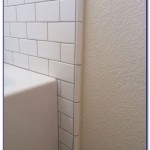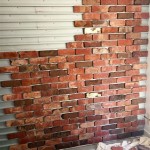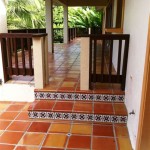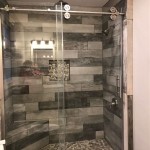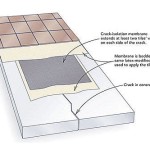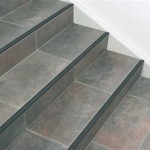Asbestos In Ceiling Tiles: What You Need To Know
Asbestos, a naturally occurring mineral, was widely used in construction materials for much of the 20th century due to its durability, fire resistance, and insulating properties. One common application was in ceiling tiles, both in residential and commercial buildings. While asbestos is no longer used in new construction, many older structures still contain asbestos-containing materials (ACMs), posing a potential health risk if disturbed. Understanding the risks associated with asbestos in ceiling tiles, recognizing potential signs of its presence, and knowing how to handle or manage ACMs are crucial for protecting your health and the health of others.
Asbestos is composed of microscopic fibers that, when inhaled, can lodge in the lungs and other organs. Over time, this exposure can lead to serious and often fatal diseases, including asbestosis (scarring of the lungs), lung cancer, and mesothelioma (a rare cancer affecting the lining of the lungs, abdomen, or heart). The latency period between asbestos exposure and the onset of these diseases can be decades, making early detection and preventative measures all the more important.
It is important to note that asbestos is not dangerous if it is undisturbed and in good condition. The risk arises when ACMs are damaged, deteriorated, or disturbed, releasing asbestos fibers into the air. Common activities that can disturb asbestos-containing ceiling tiles include renovations, demolitions, repairs, and even simple tasks like drilling holes for hanging pictures or removing tiles.
Identifying Asbestos-Containing Ceiling Tiles
Determining whether your ceiling tiles contain asbestos requires careful assessment. While some visual cues may suggest the presence of asbestos, the only definitive way to confirm its presence is through laboratory testing. Here are some factors to consider:
Age of the Building: Buildings constructed before the 1980s are more likely to contain asbestos-containing materials. Asbestos use began to decline in the late 1970s as concerns about its health effects grew, and it was largely phased out by the mid-1980s. If your building was built or renovated before this period, the likelihood of asbestos in ceiling tiles is higher.
Tile Appearance: Asbestos-containing ceiling tiles often have a specific appearance. They may be 12x12 inch or 24x24 inch squares, often with a fissured or textured surface. The tiles might be brittle and easily damaged. However, visual inspection alone is not enough to confirm the presence of asbestos, as many non-asbestos tiles can mimic the appearance of ACMs.
Manufacturer Information: In some cases, you may be able to identify the manufacturer and product name of the ceiling tiles. This information can then be researched to determine if the product historically contained asbestos. However, this approach can be challenging, as product names and formulations may have changed over time.
Laboratory Testing: The most reliable way to determine if ceiling tiles contain asbestos is to have them tested by a qualified laboratory. A sample of the tile must be carefully collected and sent to a lab for analysis using polarized light microscopy (PLM) or transmission electron microscopy (TEM). These methods can identify the presence and type of asbestos fibers in the sample.
When collecting a sample for testing, it is crucial to take precautions to minimize the risk of fiber release. Wet the tile slightly with water containing a drop of detergent to suppress dust. Carefully cut a small piece of the tile using a utility knife and place it in a sealed plastic bag. Label the bag clearly with the date, location, and sample description. Wear a respirator and gloves during this process to protect yourself from potential exposure. It is highly recommended to hire a professional asbestos inspector to perform the sampling to ensure safety and accuracy.
Risks Associated with Disturbed Asbestos-Containing Ceiling Tiles
The primary health risk associated with asbestos-containing ceiling tiles occurs when the tiles are disturbed or damaged, releasing asbestos fibers into the air. These microscopic fibers can then be inhaled, leading to serious health problems over time. Understanding the activities that can disturb ACMs and the potential health consequences is essential for preventing exposure.
Renovations and Demolitions: These activities are among the most common causes of asbestos disturbance. Removing ceiling tiles during renovations, demolishing walls or ceilings, or even drilling holes for new wiring can release asbestos fibers into the air. Before undertaking any renovation or demolition work in a building known or suspected to contain asbestos, it is crucial to have the materials inspected by a qualified asbestos professional. If asbestos is present, it must be properly abated before work can begin.
Water Damage: Water damage can weaken ceiling tiles and cause them to crumble, releasing asbestos fibers. Leaks from roofs, plumbing, or condensation can all contribute to water damage. If you notice water stains or sagging ceiling tiles, it is important to address the source of the leak and have the tiles inspected for asbestos.
Natural Deterioration: Over time, asbestos-containing ceiling tiles can deteriorate naturally, becoming brittle and prone to damage. This is particularly true in older buildings where the materials have been exposed to years of wear and tear. Regular inspections can help identify signs of deterioration and allow for proactive management of ACMs.
Accidental Damage: Accidental damage, such as bumping into ceiling tiles with furniture or ladders, can also release asbestos fibers. It is important to be careful when working around ceiling tiles and to avoid any activities that could damage them.
The health consequences of asbestos exposure can be severe and long-lasting. Asbestosis causes scarring of the lungs, leading to shortness of breath, coughing, and chest pain. Lung cancer is another common asbestos-related disease, and mesothelioma is a particularly aggressive and rare cancer that affects the lining of the lungs, abdomen, or heart. There is no known cure for mesothelioma, and the prognosis is generally poor.
The risk of developing these diseases depends on several factors, including the duration and intensity of exposure, the type of asbestos fibers inhaled, and individual susceptibility. Even low levels of asbestos exposure can pose a risk, and there is no known safe level of exposure.
Managing and Abating Asbestos-Containing Ceiling Tiles
If asbestos-containing ceiling tiles are identified in your building, there are several options for managing the risk. The best approach depends on the condition of the tiles, the likelihood of disturbance, and your budget.
Encapsulation: Encapsulation involves sealing the asbestos-containing material with a protective coating. This prevents the release of asbestos fibers into the air. Encapsulation is a good option for ACMs that are in good condition and are not likely to be disturbed. A professional asbestos contractor should apply the encapsulant to ensure proper coverage and adhesion.
Enclosure: Enclosure involves building a barrier around the asbestos-containing material. This could involve installing a new ceiling below the existing one or covering the tiles with a protective layer of drywall. Enclosure is another option for ACMs that are in good condition and are not likely to be disturbed.
Removal: Removal involves completely removing the asbestos-containing material from the building. This is the most expensive option, but it eliminates the risk of future exposure. Asbestos removal must be performed by a licensed and qualified asbestos abatement contractor. The contractor will use specialized equipment and techniques to minimize the release of asbestos fibers during the removal process. The removed materials must be disposed of properly at an approved landfill.
Before undertaking any asbestos abatement work, it is essential to have the building inspected by a qualified asbestos professional. The inspector will assess the condition of the ACMs, determine the extent of the contamination, and develop a detailed abatement plan. The abatement plan should outline the procedures that will be used to remove or manage the asbestos, as well as the safety precautions that will be taken to protect workers and building occupants.
During asbestos abatement, it is crucial to follow strict safety protocols to minimize the risk of exposure. These protocols may include:
- Using negative air pressure to prevent asbestos fibers from escaping the work area.
- Wearing respirators and protective clothing.
- Sealing off the work area with plastic sheeting.
- Wetting the asbestos-containing materials to suppress dust.
- Properly disposing of asbestos waste.
After the abatement work is completed, the area should be thoroughly cleaned and inspected to ensure that all asbestos fibers have been removed. Air samples should be collected and analyzed to verify that the air is safe to breathe.
Regular inspections of asbestos-containing materials are important to ensure that they remain in good condition and do not pose a health risk. If you notice any signs of damage or deterioration, such as crumbling, cracking, or water stains, you should have the materials inspected by a qualified asbestos professional. Proactive management of ACMs can help prevent exposure and protect your health and the health of others.

Types Of Asbestos The Ultimate Guide For Residential Homes Scott Home Inspection

What Do Asbestos Ceiling Tiles Look Like Removal Pro

What Do Asbestos Ceiling Tiles Look Like Removal Pro

5 Signs Your Ceiling Tiles Contain Asbestos Monterey Ca Disaster Kleenup Specialists

What Do Asbestos Ceiling Tiles Look Like Removal Pro

Asbestos Ceilings Ceiling Tile Removal Cost Guide For 2024

Asbestos In Schools A Guide For Pas Faculty

What Do Asbestos Ceiling Tiles Look Like Removal Pro

Ways To Identify Asbestos Ceiling Tiles Boggs Inspection Services

Asbestos In Ceiling Tiles And Wall Plaster What You Need To Know Casa Environmental Services
Related Posts

